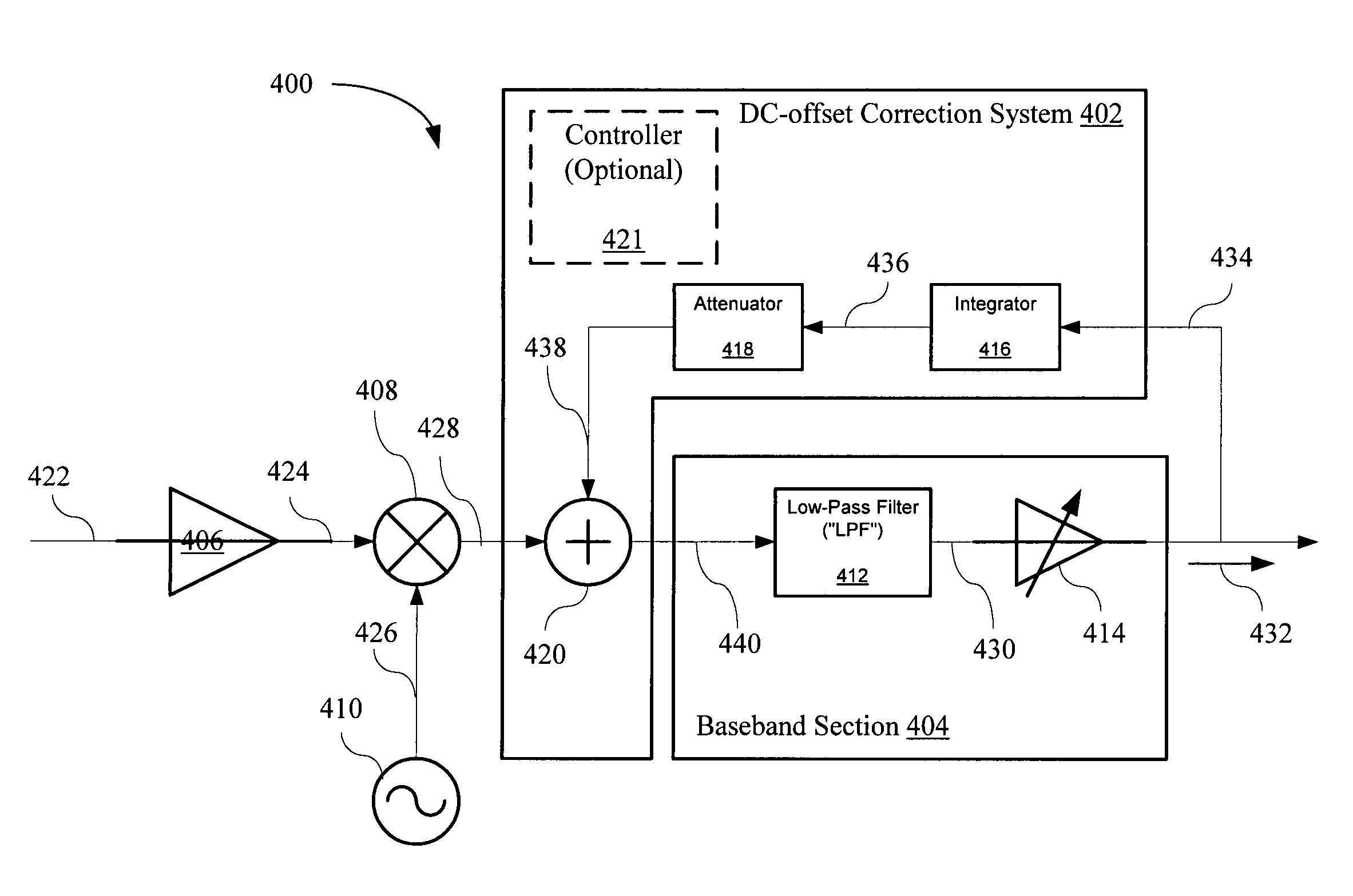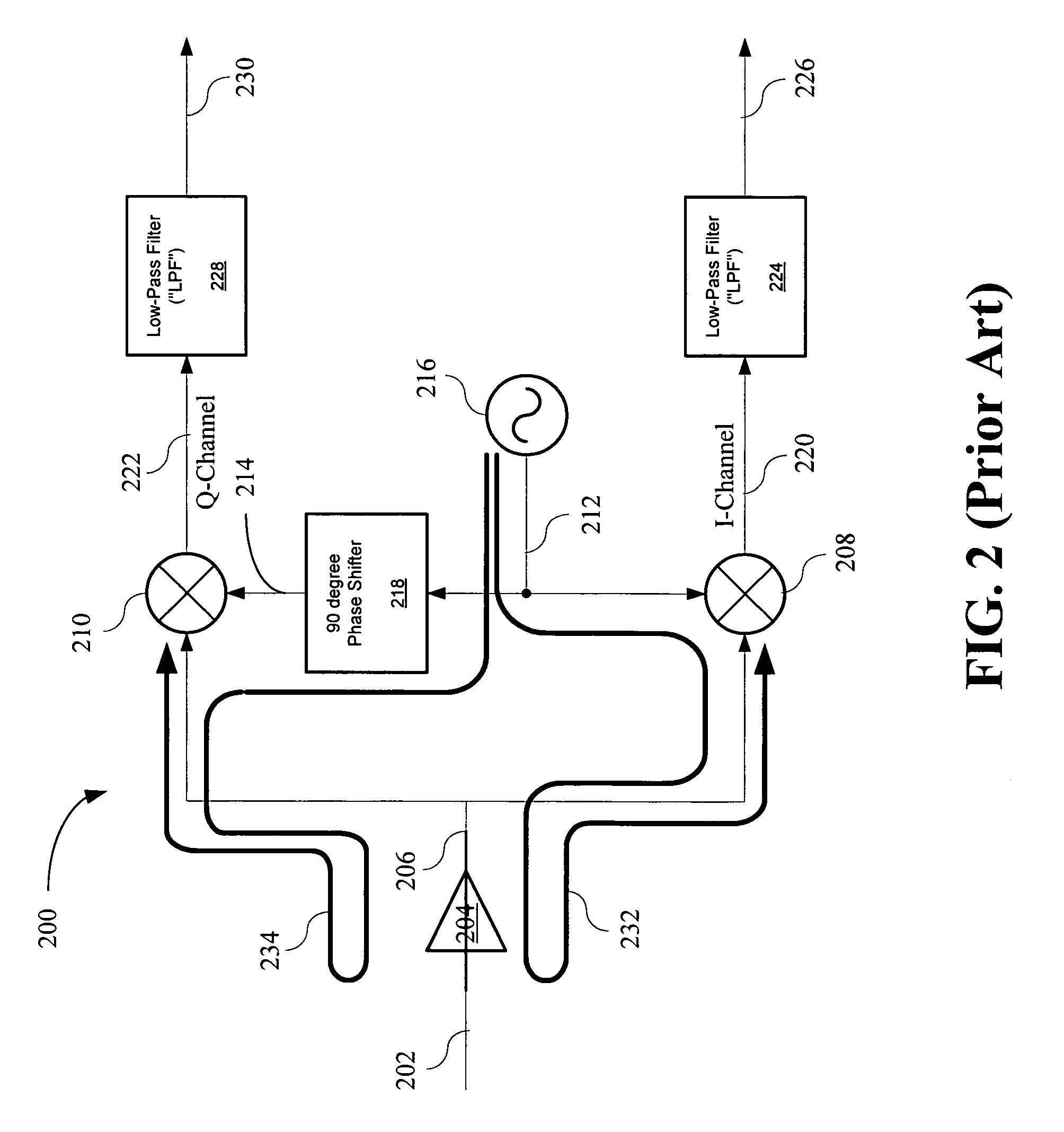DC offset correction for direct-conversion receiver
a direct-conversion receiver and offset correction technology, applied in the field of radio frequency receivers, can solve the problems of direct-conversion receivers with a number, leakage, distortion and direct current offset, and the most serious dc offs
- Summary
- Abstract
- Description
- Claims
- Application Information
AI Technical Summary
Problems solved by technology
Method used
Image
Examples
Embodiment Construction
[0034]This invention discloses a direct-current (“DC”) offset correction system (referred to herein as a “DC-offset Correction System”) that corrects for the DC offset present in direct-conversion receivers. Generally, the DC-offset Correct System utilizes an improved DC feedback correction servo-loop that applies an attenuation coefficient in the feedback path.
[0035]In FIG. 4, an example implementation of a direct-conversion receiver 400 utilizing a DC-offset Correction System 402 is shown. The direct-conversion receiver 400 may include the DC-offset Correction System 402 and a baseband section 404, LNA 406, mixer 408, and LO 410. The baseband section 404 may include a LPF 412 and VGA-LNA 414 and the DC-offset Correction System 402 may include an integrator 416, attenuator 418, combiner 420 and optional controller 421. The DC-offset Correction System 402 is a DC feedback correction servo-loop capable of producing an attenuation coefficient kfb within the DC feedback correction serv...
PUM
 Login to View More
Login to View More Abstract
Description
Claims
Application Information
 Login to View More
Login to View More - R&D
- Intellectual Property
- Life Sciences
- Materials
- Tech Scout
- Unparalleled Data Quality
- Higher Quality Content
- 60% Fewer Hallucinations
Browse by: Latest US Patents, China's latest patents, Technical Efficacy Thesaurus, Application Domain, Technology Topic, Popular Technical Reports.
© 2025 PatSnap. All rights reserved.Legal|Privacy policy|Modern Slavery Act Transparency Statement|Sitemap|About US| Contact US: help@patsnap.com



